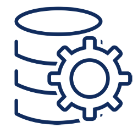To build or to buy, that is the question.
As we discussed in our insurance analytics use cases piece, there’s been a tremendous amount of innovation happening in the insurance space recently. InsurTech companies helped shift traditional thinking from “let’s operate more efficiently” into a newer “let’s focus on the customer” approach.
With that renewed focus on the customer, we’ve seen an explosion in innovations throughout the value chain for both incumbents and InsurTech companies alike. Most of these innovations revolve around AI, machine learning, and behavioral intelligence in some form or fashion.
And while InsurTech companies fight to enhance or disrupt different layers of the value chain, traditional insurers are not simply laying down and waving the white flag. Realizing that an innovative technological approach utilizing AI, machine learning, and behavioral intelligence is necessary, they have started investing heavily in the space, both internally and in other companies.
The question facing most of these carriers, however, is the age-old argument of “Build vs. Buy.” While the ‘right’ answer has yet to be determined, it goes without saying that speed is the name of the game today. And if speed is what you’re after, bolting on or enlisting the help of experts in a particular area, particularly when it comes to anything AI-related, is the best way to get to market quickly.
The reason for this is simple. Data runs the world and every minute you aren’t collecting the data you need to move forward is a minute you can never get back. Companies like Lemonade, for instance, have been collecting behavioral intelligence on their customers since they launched in 2016. With thousands of data points collected on each application multiplied by the hundreds of thousands, if not millions, of applications they have received thus far, the data starts to add up very quickly. When factoring in the exponential growth they’ve seen, that data compounds at unprecedented rates.
Partnering with InsurTechs: The Multiplier Effect
Using the behavioral intelligence data collected during both applications and claims and using machine learning to correlate it with outcomes such as risk and fraud, Lemonade’s automated underwriting and automated claims systems continue to get smarter. This mechanism turns into a flywheel of sorts as automated underwriting and claims lead to better customer experiences & better pricing, which leads to more customers, which leads to more data, and the multiplier effect becomes self-fulfilling.
In order for a legacy company to catch up with that, they need their own way of collecting that same data, and they need it fast. The key point for these companies to understand as they weigh their options is their opportunity cost. If you’re a company with unlimited resources and unlimited developers, your only consideration would be time. And that’s no small consideration. It takes time to build, test, implement, learn, iterate, tweak…rinse, and repeat. And given the complexity of some of these technical endeavors, we’re typically talking months/years not days/weeks.
Most companies, however, do not have that luxury. Repurposing key developer resources from priority tasks to building out new innovations is often impractical, even if the company knows it is imperative moving forward. When bandwidth is tight, putting down one crucial initiative to pick up another is an easy way to tread water.
If you’re buying a CRM or something like that, obviously you’re going to get something off the shelf. [insert company name] likely spent years building, testing, learning, tweaking, so on and so forth. So why would you divert time, resources, and opportunity cost to something that you could easily hire a better-positioned vendor to do? You wouldn’t try to build your own Google Analytics, right? What’s the point in reinventing the wheel?
That is why most companies are implementing parallel approaches with the help of their InsurTech partners. Basically, it’s a shift in priorities for legacy carriers from investing in companies and processes that helped ease internal pressure points (basically streamlining processes for operations, claims, and underwriting) to investing in companies and processes that help relieve pressure points for customers. With a divide and conquer strategy, legacy players can focus on defense while their InsurTech partners focus on offense.
The reason this works for legacy companies is their market size. They currently have an advantage in regards to the number of applications they see, which means catching up to the data trove of a company like Lemonade is not impossible (yet), but they need to move quickly.
Having said that, legacy companies aren’t simply partnering with InsurTech companies, they are buying stakes of them. And in some cases, creating their own InsurTechs from within. For instance, MassMutual’s Haven Life is considered its own company but is fully backed by MassMutual, allowing it to essentially incubate within the larger MassMutual ecosystem while it finds its own legs. It’s very similar to what is happening in the autonomous car space with companies like Ford and Toyota teaming up with third-party autonomous-car partners.
McKinsey noted that insurers who invest in more technology are performing 6% better than peers and growing twice as fast.
The bottom line is, in the past decade with the invention of the smartphone, consumer preferences have changed forever. The expectation is now to be able to find, buy, and receive any product at the push of a button (and for millennials, the less they have to speak to a human, the better). While incumbent insurers were focused on replacing their legacy system frameworks with a cloud-based infrastructure, InsurTechs, unburdened and unencumbered with past assumptions were able to capitalize while some of the big players were asleep at the wheel.
And as we continue to participate in the “Build vs. Buy” debate, it’s important to have an understanding of where things currently stand in the InsurTech vs. Incumbent market.
What areas are InsurTech companies focusing on?
It’s very difficult to envision the entire insurance landscape given it is a $7 trillion dollar space. And with that sort of scale, it would be impossible to up-end the entire industry overnight. But with $22 billion already invested in the InsurTech space, that isn’t to say people aren’t trying.
As we discussed in our previous article, these InsurTech companies fall into many different categories which are now loosely grouped into these four: (1)
- Full-stack digital insurers offering new products and services like Lemonade and Root Insurance
- Digital MGAs offering new products and services like Slice and Trov
- Solution providers providing new capabilities such as DropIn and Splice
- Data providers with new data sources like Hazard Hub, Fenris, and ForMotiv
Majesco, in cooperation with Global Insurance Accelerator (GIA) and the Silicon Valley Insurance Accelerator (SVIA) recently completed a survey to learn more about the InsurTech thought process as they enter the market. The survey was given to two groups of InsurTechs, “Insurer/Reinsurance/MGA startups” were grouped together as Insurer/MGAs and “Outside Solution/Data Provider startups” were grouped as “Solution Providers.”
The following graph shows what lines of business, products, or services they are targeting.
Lots of insurance policies are very complex, making automation and optimization much more difficult. But simpler policies like in the P&C space are ripe and ready for disruption.
As you can see, both groups are devoting most of their attention to P&C, for now. Solution Providers have more emphasis on commercial and specialty lines, while Insurer/MGAs have more emphasis on personal lines.
Conversely, Insurer/MGAs are putting more focus on L&A lines of business. They are attempting to get ahead of the digital transformation before the Insurer/MGAs shift their focus to this segment.
We recently highlighted Ladder Life and Haven Life as two examples of InsurTechs looking to disrupt the term-life insurance space. Using new data sources and machine learning, these companies are hoping to reignite the declining life insurance market.
How does each view new technologies?
This graph was very interesting as it shows the difference in views of what technologies are emerging as most important in the space. Solution Providers are paying a lot more attention to platform technologies such as Cloud, Cognitive/AI, IoT, and Blockchain, while Insurer/MGAs’ focus more on digital engagement for customers through innovations like Mobile interfaces, Chatbots and Social. (1)
One of the key takeaways we found from this chart was the fact that Open APIs made their way into the top 3 for both groups. This is relevant because it shows that both segments understand the importance of creating solutions that play nicely with other companies in the ecosystem. The team-first mentality is encouraging for the industry as a whole because it will allow innovations to come to market quicker than if companies were to attempt to go at it alone.
This supports the thesis that companies that are increasingly partnering up are tapping into available ecosystems that provide the multiplier effects we discussed earlier on. Or, simply put, “buying.”
As we said, even if you have unlimited financial and technical resources and all the time in the world, it would still be impossible to be successful in every area mentioned. No company in the world operates that way. Just like Apple uses Samsung screens and Uber uses Paypal’s payment system, legacy carriers would be foolish to try to reinvent the available wheels.
Picking Teams
The fact that companies, both Incumbents and InsurTechs, are buying (pun intended) into this mentality is huge for the industry as a whole. As you can see in the graph below, both segments are focused heavily on five areas, mainly having to do with direct relationships between Insurers, InsurTechs, MGAs, Reinsurers, and other industries. The areas that don’t receive as much attention are marketplaces.
InsurTech Insurer/MGAs lead Solution Providers when it comes to relationships with other industry segments and Reinsurers. In contrast, Solution Providers are much more involved with legacy carriers and their InsurTech counterparts.
To quote Majesco’s report, “Examples of this could be found in Slice’s partnerships with incumbent insurers like L&G and XL Catlin, Lemonade with WeWork and Ladder with Sofi, or those working with Bold Penguin or Ask Kodiak to expand their distribution reach. In contrast, Solution Providers’ offerings are insurance-centric, focused on enabling Insurers (incumbents and startups) and we are seeing these partnerships emerge and grow.”(1)
One other thing to note is the fact that, despite the high levels of reported importance for open APIs we discussed earlier, hardly any InsurTechs are part of a marketplace where open APIs offer ease of choice and integration. I imagine this will change in the future as more options become available, technology becomes easier to integrate, and direct partnership deals become more difficult to obtain.
What do InsurTech companies think about the industry?
Like any industry undergoing disruption, the incumbents often have a warped perception of the reality of their situation. They tend to not see or downplay issues that are the very reason for new companies to sprout up. The survey below proves exactly that. InsurTechs are seeing far more weaknesses they can exploit or improve.
So where are these weaknesses, or business opportunities, in the current customer journeys?
The simple answer? Everywhere.
Save for researching policy offerings, Solution Providers view every aspect of the value chain as an area that could be improved. The area with the biggest discrepancy appears to revolve around claims. “Solution Providers also ranked Quote/ Buy much higher in their value chain focus (#5 vs. #11), and the “buy” part of this process is reflected in their feelings about the difficulty of completing a policy application with incumbents,”(1) according to Majesco’s report.
When looking at it in a slightly different way, comparing the opinions of the two InsurTech groups versus the incumbents, their views on how much they can improve different layers of the value chain is very interesting.
Other than policy payment, which lacked, and Applications, which were a virtual tie, Solution Providers find their ability to solve pain points far higher than that of the Insurer/MGAs. In fact, for most of the pain points, Insurers/MGAs showed hardly any confidence in being able to provide a better solution.
These differences give us clues into how newcomers are planning on attacking the market. The following graph shows how InsurTechs perceive the reception they are getting from incumbents. Unsurprisingly, Solution Providers view themselves as allies of incumbents in their collective fight to improve processes, customer experiences, pricing, and more. This makes sense given these InsurTechs are not actually ‘competing’ but rather enhancing or relieving pressure points that incumbents don’t have time or expertise to fix themselves. Again supporting the “buying” thesis. On the other hand, a large portion of Insurer/MGAs holds that same view, which is surprising given the fact that, at first glance, many seem to be competing for head to head (think Uber vs. Taxis).
Slice, for example, is an MGA that sells on-demand insurance D2C but also works with incumbent insurers to develop digital products on their platform that they sell to their customers. (1) For instance, they offer Homeshare insurance that is pay-per-night (think Airbnb), as well as Rideshare insurance that is pay-per-hour (think Uber). As the initial goal for MGAs, to help incumbents reach additional markets or provide different products, has remained unchanged, the relationship between the new-age MGAs and legacy insurers has not changed.
In Conclusion
As the build vs. buy debate rages on, it seems most companies are taking the latter approach. Who knows, maybe one day they will bring the technology in-house, like Tesla building their own internal CRM after 10 years of using Salesforce, but our guess is that most companies will take the buy/partner approach to start. Simply put, it’s easier, faster, and more affordable.
As new InsurTech companies enter the fray, traditional carriers partner with innovators and the landscape continues to evolve, the issues will continue to revolve around budget and digital capabilities. We have seen this first-hand at ForMotiv. The carriers we’ve spoken with who haven’t adopted a behavioral intelligence approach fall into two camps…The first being they haven’t started their digital transformation yet and are still attempting to shift from manual & paper-based processes to digitized experiences. The second being they haven’t completed their digital transformation yet and are still figuring out the nuances of having shifted to digital. Neither of these is discouraging as they will (hopefully) complete their transformations with the next logical technological step being integrating AI and behavioral intelligence throughout their newly build technology stack. The nice thing about a solution like ForMotiv’s is the fact that with a few lines of code you can start collecting behavioral data, regardless of where you are in your digital transformation.
As we mentioned in our last article, insurers will have to parallel track a digital approach without ignoring their current business operations. This is potentially best solved by partnering with third-party vendors as there is a shrinking window of time before customers simply switch to those companies providing Digital Insurance 2.0 products, processes, and pricing.
ForMotiv is a behavioral intelligence platform that helps leading financial service, insurance, and on-demand companies measure user’s digital body language to predict outcomes such as risk and fraud.







